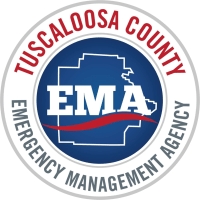
Re-entering flooded structures is dangerous and you must be aware of the seriousness of the danger posed by saturated ground surfaces, unstable damaged buildings, infectious organisms carried by floodwater, and especially the risks of working around damaged power and natural gas lines.
What you may need:
- Flashlight
- First aid kit
- Drinking water
- Waterproof boots
- Hat and sturdy shoes
- Camera to record damage
- Tools (crowbar, hammer, saw, pliers)
- Cleaning supplies (shovels, buckets, hose, mops, rags, brooms, rubber gloves, cleaners, disinfectants, & lubricating oil)
- Trash bags
Going Back Home
When it is safe to return to your neighborhood, be careful. Do not drive or walk through running or standing water (turn around don't drown). Respect road barricades. Watch for downed power lines.
Wear sturdy, waterproof shoes and gloves. Walk all the way around the building to check for structural damage before going in. Do not smoke or use open flame. Turn off the outside gas valves. Shut off the electricity. As you enter, make sure the roof, stairs, floor, and ceiling are not in danger of collapsing. Open all doors and windows. Let the building air out for several minutes before you stay inside. Inspect the interior with a flashlight.
Do not turn on any lights or appliances until an electrician or utility company employee gives you approval to do so. If your basement is flooded, don’t flush any toilets.
Assess the damage and take photographs of it if possible. Make a preliminary plan for cleanup and repair.
Cleanup and Repair
1. When you first go back to start cleaning up, rescue the most valuable items first—money, jewelry, insurance papers, and photographs.
2. Next, protect your home from more damage by covering holes in the walls, windows, or roof with plastic, tarps, or boards.
3. Make temporary repairs to brace sagging floors or ceilings and fix broken stairs and other safety hazards.
4. Call your insurance agent. Find out how to file a claim and what records of damages and expenses you will need. Even if your damage is not covered, your agent can recommend places to get advice and assistance. Plan to take photographs and keep records of the damage and repair work.
5. Finally, make a list of things that need to be cleaned, repaired, and replaced, and do them one at a time. Follow the following guidelines:
Other Cleanup and Repair Suggestions
All food, drinks, medicine, and cosmetics that have gotten wet from the flood must be discarded. The only safe foods are those in sealed cans, but the cans must be cleaned and disinfected before they are opened. Drinks in aluminum cans should be thrown out.
All wet household items must be either discarded or cleaned and disinfected. The mud is easier to get off while it is wet, so hose everything off soon (even if your water is not safe for drinking.) Things that need repair have to be dried out first.
Ask your trash service what it will pick up and when. Your city/town may offer special collection services for certain types of debris. Keep the contaminated rubbish separate from the things you are cleaning and drying out in the yard.
The house itself will need cleaning too. Mud is a serious health hazard. Shovel as much of it out as possible, while it is still wet. Then wash down the house, inside and out, with your garden hose. A soap-spraying attachment will help you do a more thorough job on the walls, floors, and furniture. But don’t use a high-pressure process on soggy walls or objects. Heating and air conditioning ducts and electrical sockets need to be hosed out, too or a cleaning service called in.
Keep the doors and windows open as much as possible to let things dry out and/or use a dehumidifier.
Rest frequently. Drink plenty of water. Be careful. Use generators, gasoline-powered machines, camping stoves, and barbecue grills outdoors only.
Call your local building permitting department before you make major repairs. You may need a building permit. There are many ways to prevent the same damage from occurring next time there is a flood, and the building department is a good source of information.
Health & Safety
- Be extremely cautious around wet or broken power and gas lines.
- Remember the wet floors, stairs, and ceilings are probably unsteady or a slip hazard.
- Avoid touching floodwater or mud. Both are contaminated with infectious organisms, chemicals, and sewage.
- Wash your hands often, especially before eating or drinking.
- Watch out for rats, snakes, and other displaced animals, including pets.
- For many weeks, symptoms of stress will be normal. Rest often. Eat well.
- Make a list of things to do, and set a reasonable schedule.
- Get control over your future by flood-proofing your house while you do repairs.
- Reassure your children. Listen to them talk about their feelings. Include them in the cleanup by giving them chores they can handle.
- Be careful with chainsaws, generators, camp stoves, and other gear.
